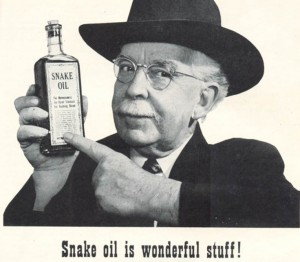Memories are short. The constant flood of global news pouring from the internet, blessing though it may be, hasn’t helped the public sort the gold from the garbage. Let’s remember all the way back to last week, when numerous news outlets gave the Violence Policy Center (VPC) some entirely undeserved coverage for disinterring and dusting off a manufactured controversy about defensive gun uses (DGUs) that was laid to rest eighteen years ago.
If today’s fresh-faced reporters knew anything about the Violence Policy Center’s past “studies”, they would have stiff-armed its latest offering as the agitprop it clearly is. More about the VPC way of deception later.
The uncredited VPC report, presumably written by VPC founder and leader Josh Sugarmann, claims that guns are rarely used to stop crimes, an assertion contrary to numerous other independent studies. It starts with heavy emphasis on the misleading truth that justifiable firearm homicides by private citizens are rare compared with criminal homicides. The first four pages of the seven-page report repeat the message of how seldom people shoot a criminal dead in self-defense. For effect, this section includes several extraneous iterations of the data by sex and race of the victim and perpetrator.
Only after beating readers over the head with this nonsense for four pages does the author even acknowledge that firearms are ever used successfully for defense with no one getting killed. Never mentioned is the fact that in most cases no shot is even fired.
Even when discussing defensive gun uses, the report scorns differing criminology research as propaganda from the National Rifle Association instead of properly crediting it to award-winning criminology professor Gary Kleck. VPC cites the federal government’s National Crime Victimization Survey (NCVS) as the definitive source for statistics on defensive gun uses.
 But Kleck has written extensively and convincingly about why the NCVS greatly underestimates the number. And he wrote it twenty four years ago in his book “Point Blank: Guns and Violence in America”, a much-cited criminology work that won the 1993 American Society of Criminology’s Hindelang Award for “most outstanding contribution to research in criminology”. The VPC report only mentions Kleck as an afterthought and conveniently omits the peer recognition of his work.
But Kleck has written extensively and convincingly about why the NCVS greatly underestimates the number. And he wrote it twenty four years ago in his book “Point Blank: Guns and Violence in America”, a much-cited criminology work that won the 1993 American Society of Criminology’s Hindelang Award for “most outstanding contribution to research in criminology”. The VPC report only mentions Kleck as an afterthought and conveniently omits the peer recognition of his work.
Kleck notes several methodological problems with surveys in general (page 108) and the government’s NCVS survey in particular (page 110) that cause undercounting of defensive gun uses. Not the least of these problems is the necessity for some survey respondents to admit to one or more crimes if they answer truthfully. Particularly since simply owning a gun could be a felony in some jurisdictions, a respondent would be expected to answer gun-related questions in a way that avoids self-incrimination. This is especially likely if the questioner is an agent of the federal government.
It’s bad enough that the VPC misrepresents Kleck’s respected research. But worse, it completely omits any mention of all the other research on defensive gun uses. Eleven other independent studies (see page 159) have revealed estimates of defensive gun uses to be over 700,000 annually. The VPC report indicates, relying on NCVS data, that on the average Americans use guns to defend against crime about 47,000 times a year. Kleck’s estimates range as high as 2.5 million, a figure he presents and defends with coauthor Marc Gertz in his landmark article (see page 164) in The Journal of Criminal Law and Criminology, vol. 86, no. 1, Fall 1995. The preponderance of evidence destroys the Violence Policy Center’s assertions that defensive gun uses are rare. But what VPC activists lack in scientific integrity they attempt to compensate for with purple prose.
The VPC report does not spare us the usual denunciations of the NRA, the “gun lobby”, “the devastation guns inflict on our nation each and every year [sic]”, and the “unceasing, bloody toll” of gun crime, even as violent crime has been sharply decreasing for years. The Violence Policy Center hardly even pretends to be fair or balanced.
Gun prohibitionists ramped up their war on gun ownership in the 1980s by targeting handguns. But soon it became clear that Americans depend on handguns for personal protection, and over the years politicians came to understand that pushing for a widespread ban amounted to political self-destruction. The solution, as VPC’s writer helpfully articulated in a 1988 strategy analysis, was to target another type of firearm, the so-called “assault weapon”.
Today the standard rifle for hunting, sport, self-defense, and police work, back in 1988 AR-type semiautomatic rifles were just coming into popular use. Americans weren’t that familiar with them, and hoplophobic gun control advocates were terrified of their military appearance. The VPC’s strategy, incredibly still posted on the VPC website
today, crassly exploits this uncertainty:
Assault weapons—just like armor-piercing bullets, machine guns, and plastic firearms—are a new topic. The weapons’ menacing looks, coupled with the public’s confusion over fully automatic machine guns versus semi-automatic assault weapons—anything that looks like a machine gun is assumed to be a machine gun—can only increase the chance of public support for restrictions on these weapons.
Yes, the Violence Policy Center’s activists have no intention of spreading the truth. They specialize in just the opposite.
The journalists who gave us this story unaccompanied by a ringing denunciation should be red-faced. Let’s hope that at least they have learned by now that semiautomatic rifles are not machine guns.
—Timothy Wheeler, MD is director of Doctors for Responsible Gun Ownership, a project of the Second Amendment Foundation.
All DRGO articles by Timothy Wheeler, MD.


